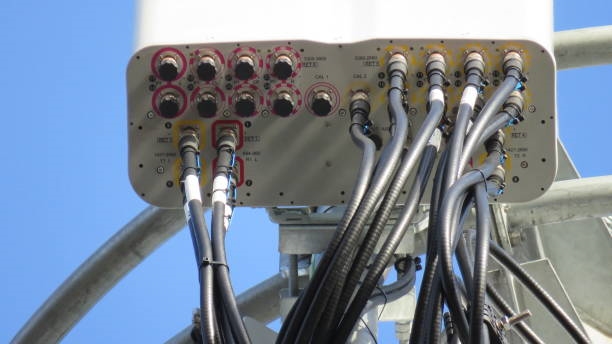Wi-Fi front-end modules (FEMs) are critical components in modern Wi-Fi routers, enhancing signal coverage and receiver sensitivity to meet growing demands for stable connectivity and high signal quality. Typically, Wi-Fi 6 routers incorporate 4¨C6 FEMs, while Wi-Fi 7 routers may use 8¨C12. The performance of Wi-Fi FEMs directly impacts uplink and downlink transmission speeds, coverage distance, and overall network reliability. This article outlines ten key performance metrics for evaluating Wi-Fi FEMs, providing insights for hardware engineers, PCB designers, and electronics enthusiasts.
Overview of Wi-Fi FEMs
A Wi-Fi FEM typically includes a power amplifier (PA), a low-noise amplifier (LNA), and an RF switch. These modules operate in frequency bands such as 2.4 GHz, 5 GHz, or 6 GHz, supporting modulation schemes defined by Wi-Fi standards. In routers, FEMs amplify RF signals before transmission and after reception, ensuring robust signal quality.
The PA amplifies low-power RF signals from the modulation oscillator to sufficient power levels for antenna radiation. The LNA amplifies weak received signals while minimizing added noise to improve the system¡¯s signal-to-noise ratio (SNR).
Key Metrics for the Transmit Path
The performance of the power amplifier in the transmit path is evaluated through several critical metrics:
- Output Power (dBm): The maximum power the FEM can deliver. Comparisons of output power must consider the same modulation scheme and dynamic error vector magnitude (DEVM) constraints to ensure signal quality is not compromised.
- Transmit Gain (dB): The maximum gain provided by the FEM. Operating at full gain is generally avoided, as excessive gain can cause distortion or uneven output power.
- Output 1dB Compression Point (P1dB): The point at which the amplifier¡¯s output power deviates from the theoretical linear output by 1 dB due to gain compression. Beyond this point, the amplifier¡¯s gain decreases, and output power saturates.
- Efficiency: The ratio of the amplifier¡¯s RF output power to the DC power supplied to the transistor. Higher efficiency reduces the overall power consumption of the system.
- 2nd/3rd Harmonic Suppression: Second-order distortion generates second harmonics and two-tone intermodulation, while third-order distortion produces third harmonics and multi-tone intermodulation. These unwanted frequency components can interfere with the transmitted signal if they fall within the passband or disrupt adjacent channels if outside it. Linearization techniques help mitigate spectral regrowth.
Note: dB is a relative unit representing the logarithmic ratio of two power levels (dB = 10log(A/B)). dBm, or decibel-milliwatts, is an absolute power measurement (dBm = 10log(power/1mW)). For example, a PA¡¯s power is expressed as 20 dBm, not 20 dB.
Key Metrics for the Receive Path
The low-noise amplifier in the receive path is assessed through the following metrics:
- Noise Figure (NF): A critical parameter indicating the LNA¡¯s noise contribution. As signals pass through a system, noise inevitably increases, degrading the SNR. A lower NF is essential for maintaining signal integrity.
- Receive Gain (dB): The LNA¡¯s ability to amplify weak signals. Higher gain enhances signal strength and suppresses noise from subsequent circuit stages, but excessive gain demands high linearity in downstream components to prevent signal saturation and distortion.
- Input 1dB Compression Point (P1dB): Similar to the transmit path, a higher input P1dB indicates better linearity. Near the P1dB, nonlinearity causes harmonics and intermodulation, leading to interference.
- Third-Order Intercept Point (IP3): Third-order intermodulation products, which are close to the desired signal, are difficult to filter and significantly impact signal quality. A higher IP3 reflects better amplifier linearity at a given output power.
- Out-of-Band Rejection: The LNA¡¯s ability to suppress signals outside the target frequency band, such as a 2.4 GHz LNA rejecting signals in the 5 GHz band (e.g., outside 2.414¨C2.484 GHz).
Additional Features and Considerations
A high-performance Wi-Fi FEM performs multiple functions beyond amplification, including signal filtering, power detection, control, and switching. Many FEMs integrate a feedback circuit (DET), where the feedback voltage is linearly related to the output power, allowing accurate power estimation. Some FEMs also include a power coupler (CPLR) for more precise power feedback compared to voltage-based methods.
By evaluating these key performance metrics, engineers can assess the RF performance of a Wi-Fi FEM. These modules significantly enhance Wi-Fi signal quality and stability, and as wireless communication applications expand, the demand for high-performance FEMs continues to grow. Understanding these metrics enables better selection of Wi-Fi FEMs, optimizing wireless connectivity and user experience.
 ALLPCB
ALLPCB







